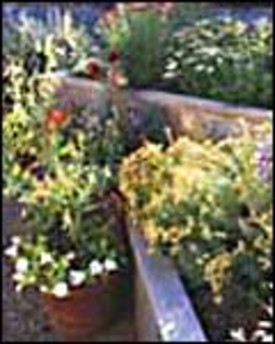The best way to invite birds to your yard permanently and easily is to plant the yard edges with food bearing ornamental plants. Simply put, these are plants that bear berries, or cones, and there are many. Also protected nesting places will make them really settle in.
Some trees like pines and spruce also provide protection from harsh weather. An open sunny area makes it more attractive. Robins will peck for worms and grubs in the lawn, and reward you with the song of the nightingale at sunset.
 |
|
Water helps too. An indented stone that holds rain water will do just fine.
Real bird fanciers get into all kinds of environmental micromanagement. Special conditions or particular plants attract certain species. For instance:
• Willow trees attract orioles, warblers and catbirds.
• Bramble thickets protect song bird nests from raccoons and crows that steal the eggs.
• A field of tall weeds and wild flowers attracts quail, grouse and pheasants. (Don’t mow until late August after the ground nesting birds have gone.)
• Seed eaters are goldfinches, cardinals, juncos and sparrows.
To attracts birds start by saving some large old trees. These will provide seeds, protection, a place to perch, and perhaps some nesting holes. Some mature hardwoods, such as wild cherry, mountain ash and birch also contain insects under the bark which attract woodpeckers.
Then plant some softwoods like pine, spruce and cedar, if none exist. They provide a place to hide all year, and their cones provide food during the difficult winter time from September to May.
Next decide where to put the small, very beautiful flowering trees, like crabapples, flowering dogwood , hawthorne and mountain ash. Place these so they can be seen and enjoyed from the house windows. Finally plant fruiting shrubs. Usually along the back border is the best place.
A variety is best because the fruit of each individual plant matures at a different time, thereby assuring a continuous food supply. However, some plants which are good for birds can become a nuisance. AVOID sumac, red osier dogwood bush, bittersweet vine, and rosa rugosa, which are too invasive and hard to control. Also, if there are children about, don’t plant poisonous things like snowberry bush.
Birds prefer sour berries to sweet ones, and most love juniper berries Once a flock of migrating cedar waxwings became totally inebriated in my yard, from gorging on the medicinal juniper berries, Birds were flopping and staggering all around.
And as for bugs it is said that a chickadee can gobble l25,000 cankerworms in a month, a wren can catch 500 caterpillars in an afternoon ,and an oriole can eat l1 caterpillars a minute. (I have not personally counted them. Just reporting.)
Listed below are some of the most beautiful plants to create a flowering landscape that will cheer the eye all season, while caring for our feathered friends.
| Plant Name | Fall Foliage Color | Height at Maturity | Fruit through | |||
| Pine, Spruce, Red Cedar | evergreen | 40′-80′ | September-May | |||
| Crabapples, nice flowers, many varieties | unexciting | 8′-35′ | August-November A few through January | |||
| Flowering Dogwoods | maroon, beautiful | 20′-25′ | September-October | |||
| Hawthorne | scarlet-orange | 30′ | October-March | |||
| Mountain Ash | orange-red | 30′ | November | |||
| Blueberry | red-maroon | 10′ Plant many kinds | July-September | |||
| Viburnum, many varieties | bronze to rich red | 6′-30′ | July-February | |||
| Sunflowers, Asters, Daisies, Marigolds, Black eyed Susan | Let seeds form which birds will eat | Plant in flower borders and beds |
Summer-Fall |
Credit: Mother’s Garden




























